Begin by acknowledging that there's a number of reasons why you might be sitting here today, and that there may be people in the room who aren't sure if they're in the right place.
[click]
if you're here for lns25
if you're here for desinv 95
if you're here for Mimi Zeiger = M(eh)-mee "fly"-ger (Vimeo)
What we have on our hands here is an odd confluence of the first day of class and a public lecture.
Which makes the task of crafting an appropriate introduction a bit challenging.
I'll begin by introducing myself and my fellow instructors:
I'm Kyle Steinfeld
Also here is Bjorn Hartmann and Robert Kett
Robert will be up shortly to introduce our first speaker
But I'd like to begin with a very short overview of the class.
Charles and Ray Eames 1977
This course introduces students
to key vocabularies, forms, and histories
from the many arts and design disciplines
represented here at UC Berkeley.
It is conceived each year around a central theme
that responds to significant works and events on campus,
providing an introduction
to the many art and design resources
available to students locally.
This semester *we focus on design*
and its connection to the arts
across a range of disciplinary contexts.
We will explore
the role of design
in framing our experience of "new" media and technology.
how design intersects with allied creative fields
such as theater, exhibition, and public art.
how design practice allows us to re-imagine the built environment
across a range of scales
including software design,
product design,
architecture,
and city planning.
The central conceit of the course
one "axis" by which we will organize our time together
is that these distinct design disciplines
may be alternatively understood
as a *singular practice*
that operates differently at different scales.
With this in mind,
we have roughly organized
the scales at which design operates
as such:
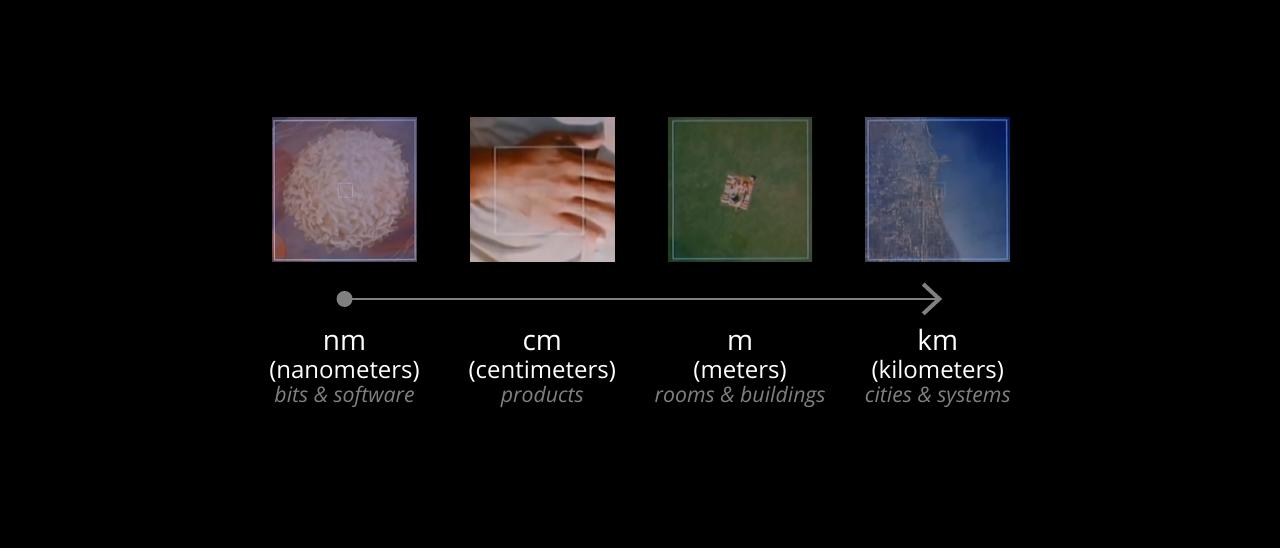
When people organize the built environment
at the scale of nanometers,
we call it software design
When people organize the built environment
at the scale of centimeters,
we call it product design
When operating
at the scale of meters,
we call it architecture
When working
at the scale of kilometers,
we call it urban design (or landscape architecture)
So, this is one "axis" of the course:
design across different scales.
Throughout the course,
we will consider how design offers
a *toolkit for framing and approaching complex problems*,
and how responsible design emerges
through new forms of collaboration
with a broad field of experts
including user advocates, artists, engineers, and scientists.
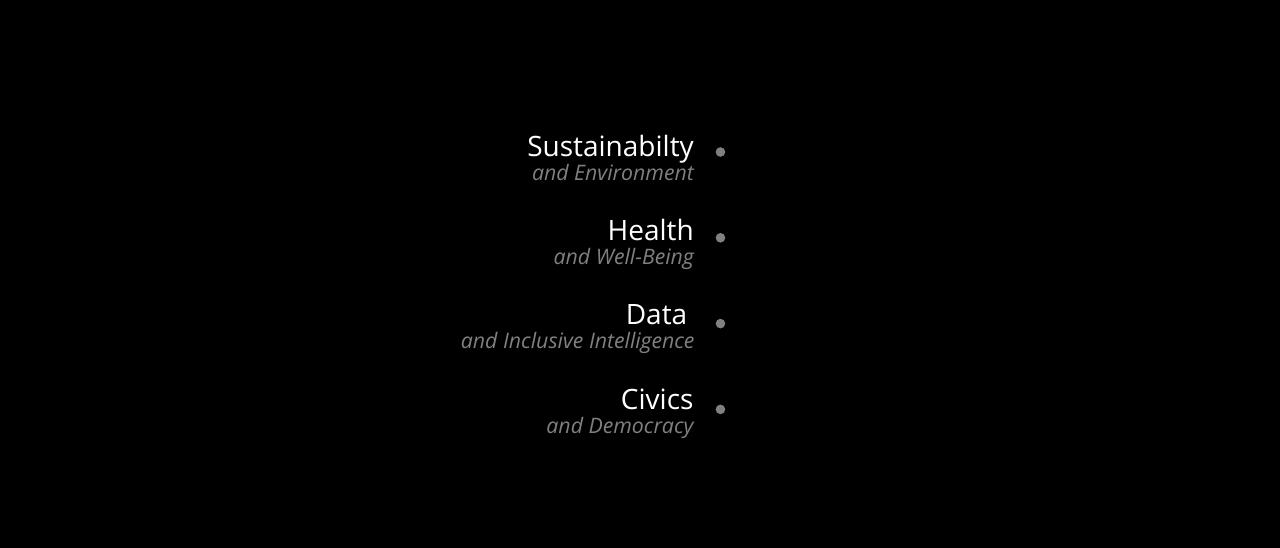
Moreover, we will consider how creative workers
address *key social issues* through their practice.
Of course,
given the nature of these issues,
any attempt to comprehensively enumerate them
or disentangle them from one another
is bound to fall short.
Nevertheless, we've given it a whack.
There will be opportunity later in the course
for an unpacking of the genesis of
the four roughly-defined themes shown here,
which together represent the second "axis" of this course.
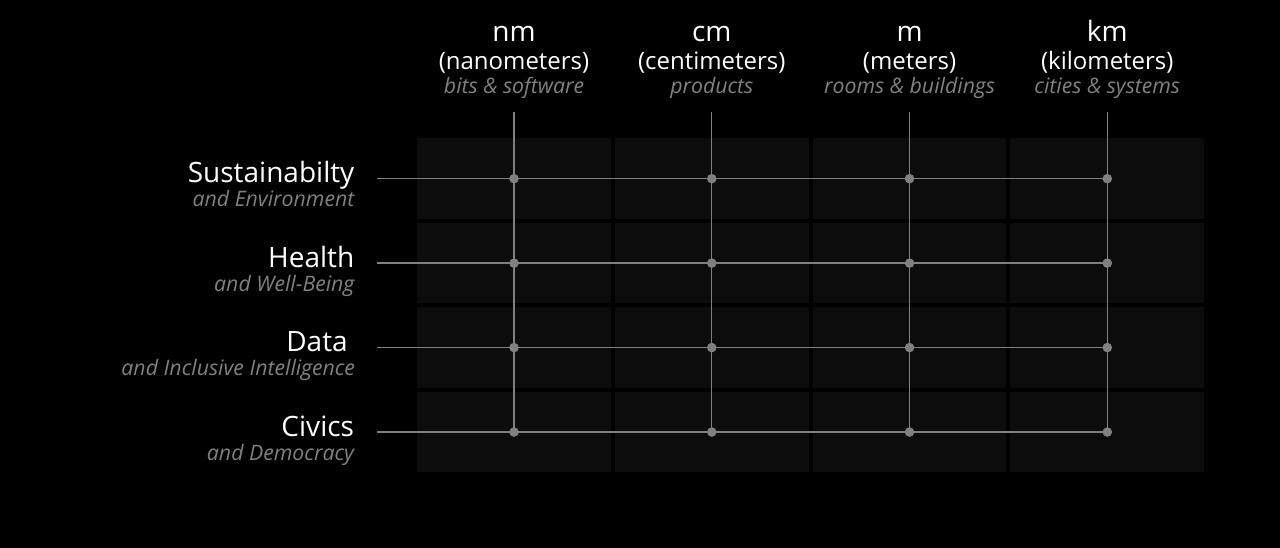
Combining our two axes,
we arrive at a matrix of scales and issues
which serves as the framework by which
we contextualize the work presented by our invited speakers.
and the instrument by which
we organize the course.
Our questions and conversations
on any given week
and surrounding any given speaker
may activate some areas of this matrix more than others.
For example, we might ask...
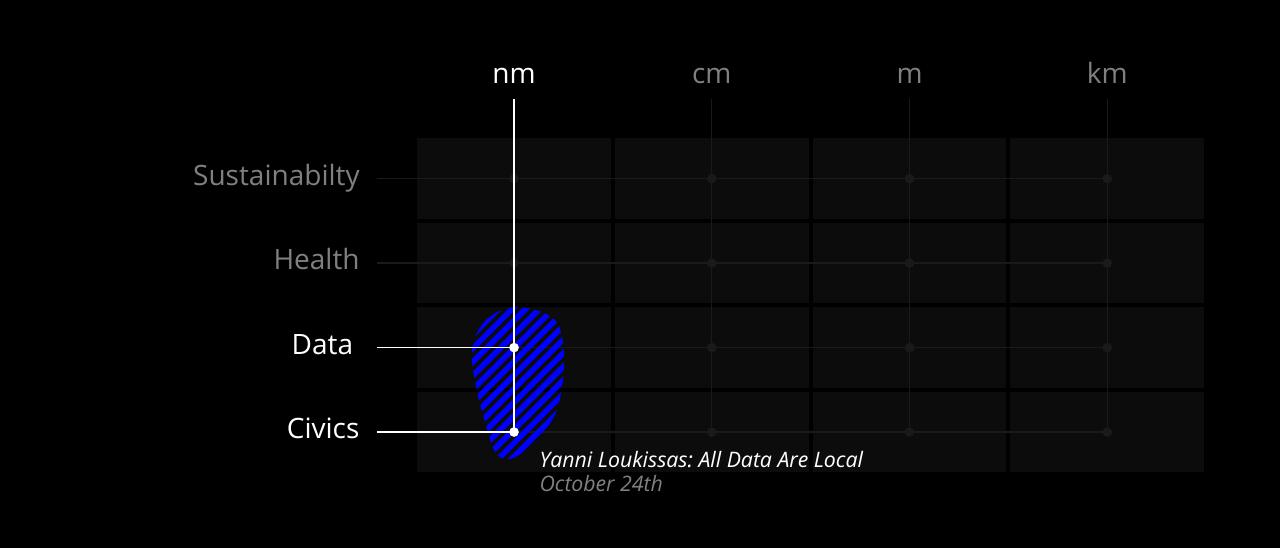
How do data-driven systems for decision making
affect inclusivity and equality?
to help address this question, we'll turn to
Yanni Loukissas on Oct 24th.
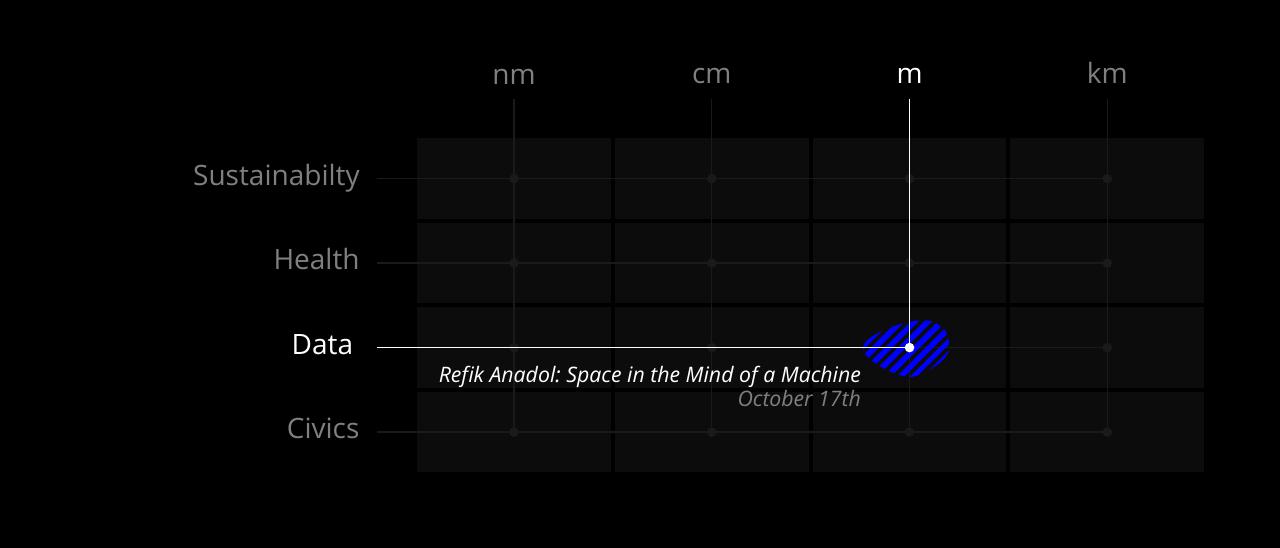
How will artificial intelligence
shape the future of work
and cultural life?
for this, we'll hear from
Refik Anadol on Oct 17th.

How can designers and their collaborators
work together to address issues of climate
and sustainability?
next week in this very room, Sara Dean will speak to this topic.
(Sara Dean on Sep 5th.)

And so, our semester unfolds in just this way.
On Tuesdays,
instructors introduce a given intersection in our matrix,
and lead student discussion
of relevant background material and readings.
On Thursdays,
outside speakers are invited
to present to students and the general public.
students will engage with speakers
during open question-and-answer periods
and reflect on the presentations in assignments
and in discussion section.
Today is Thursday!
Turn over to Robert Kett, who will introduce our first speaker.
Before I do, a bit of housekeeping:
The class is managed through BCourses,
be sure to find the course website, where you'll find our syllabus and a bunch of other course material.
Our first reading assignment has been posted, and is due on Tuesday!
Since this course is at capacity, I'll mention our waitlist policy.
[click]
If you are on the waitlist:
* you are free to attend talks on Thursdays, as these are open to the public.
* during add/drop period (but not after), you may also attend our Tuesday lectures
* i'm sorry to say that you may not attend a discussion section unless you are officially enrolled
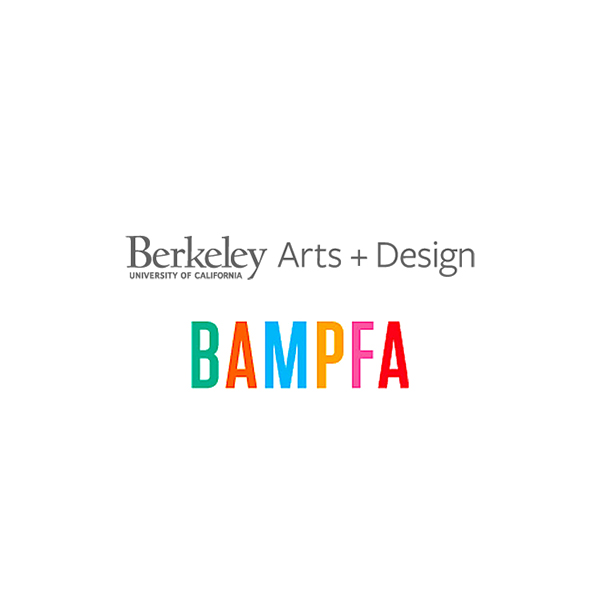
As I hand off to Robert,
This event has been organized and sponsored by Berkeley Arts + Design
as part of Thinking Through Art and Design @Berkeley,
and is hosted by The Berkeley Art Museum.